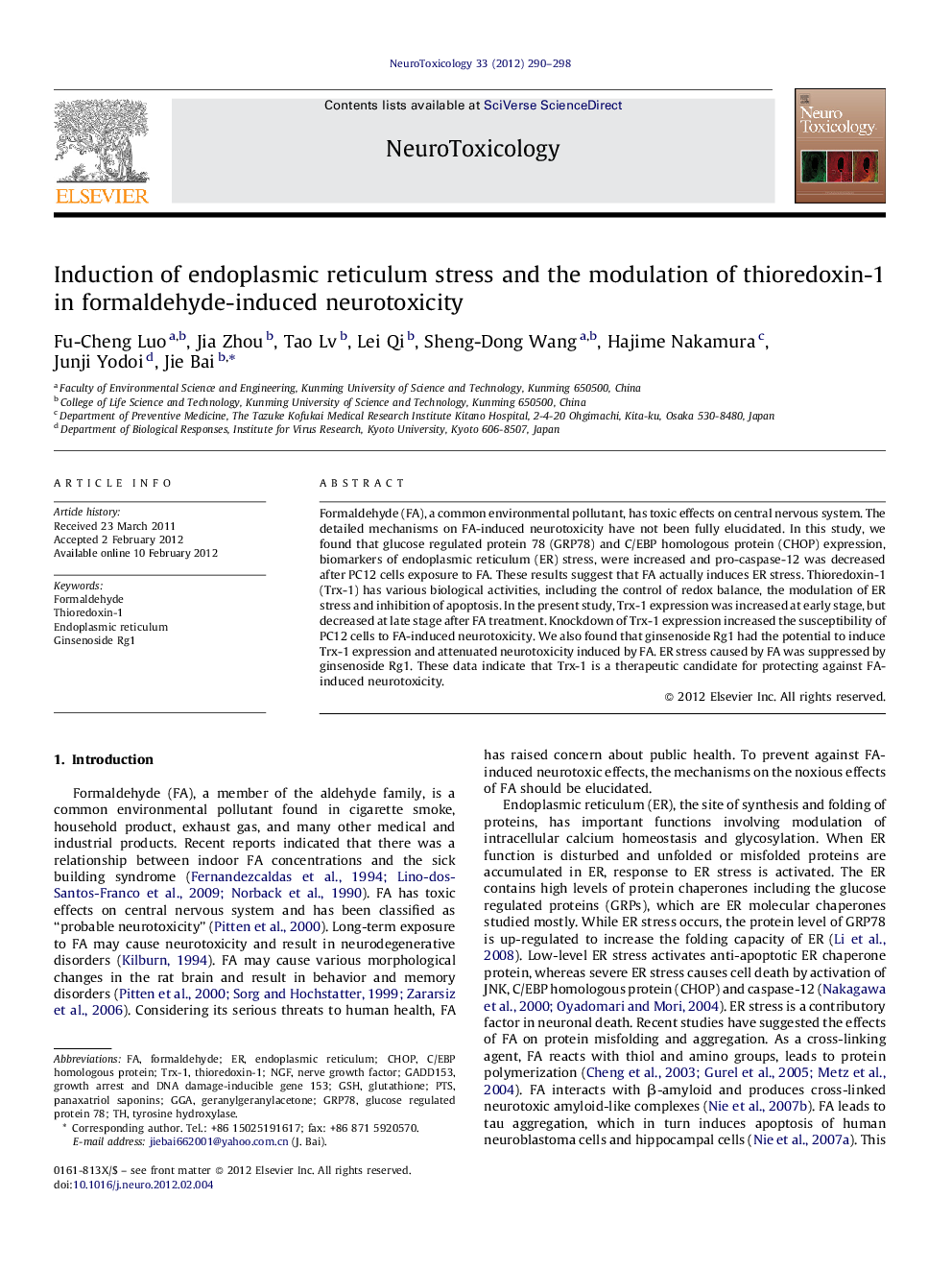| Article ID | Journal | Published Year | Pages | File Type |
|---|---|---|---|---|
| 5855302 | NeuroToxicology | 2012 | 9 Pages |
Formaldehyde (FA), a common environmental pollutant, has toxic effects on central nervous system. The detailed mechanisms on FA-induced neurotoxicity have not been fully elucidated. In this study, we found that glucose regulated protein 78 (GRP78) and C/EBP homologous protein (CHOP) expression, biomarkers of endoplasmic reticulum (ER) stress, were increased and pro-caspase-12 was decreased after PC12 cells exposure to FA. These results suggest that FA actually induces ER stress. Thioredoxin-1 (Trx-1) has various biological activities, including the control of redox balance, the modulation of ER stress and inhibition of apoptosis. In the present study, Trx-1 expression was increased at early stage, but decreased at late stage after FA treatment. Knockdown of Trx-1 expression increased the susceptibility of PC12 cells to FA-induced neurotoxicity. We also found that ginsenoside Rg1 had the potential to induce Trx-1 expression and attenuated neurotoxicity induced by FA. ER stress caused by FA was suppressed by ginsenoside Rg1. These data indicate that Trx-1 is a therapeutic candidate for protecting against FA-induced neurotoxicity.
⺠Effects of formaldehyde on endoplasmic reticulum stress and thioredoxin-1 expression. ⺠Formaldehyde induces endoplasmic reticulum stress. ⺠Ginsenoside Rg1 induces thioredoxin-1 expression. ⺠Ginsenoside Rg1 suppresses formaldehyde-induced endoplasmic reticulum stress. ⺠Thioredoxin-1 is a therapeutic candidate for formaldehyde-induced neurotoxicity.
